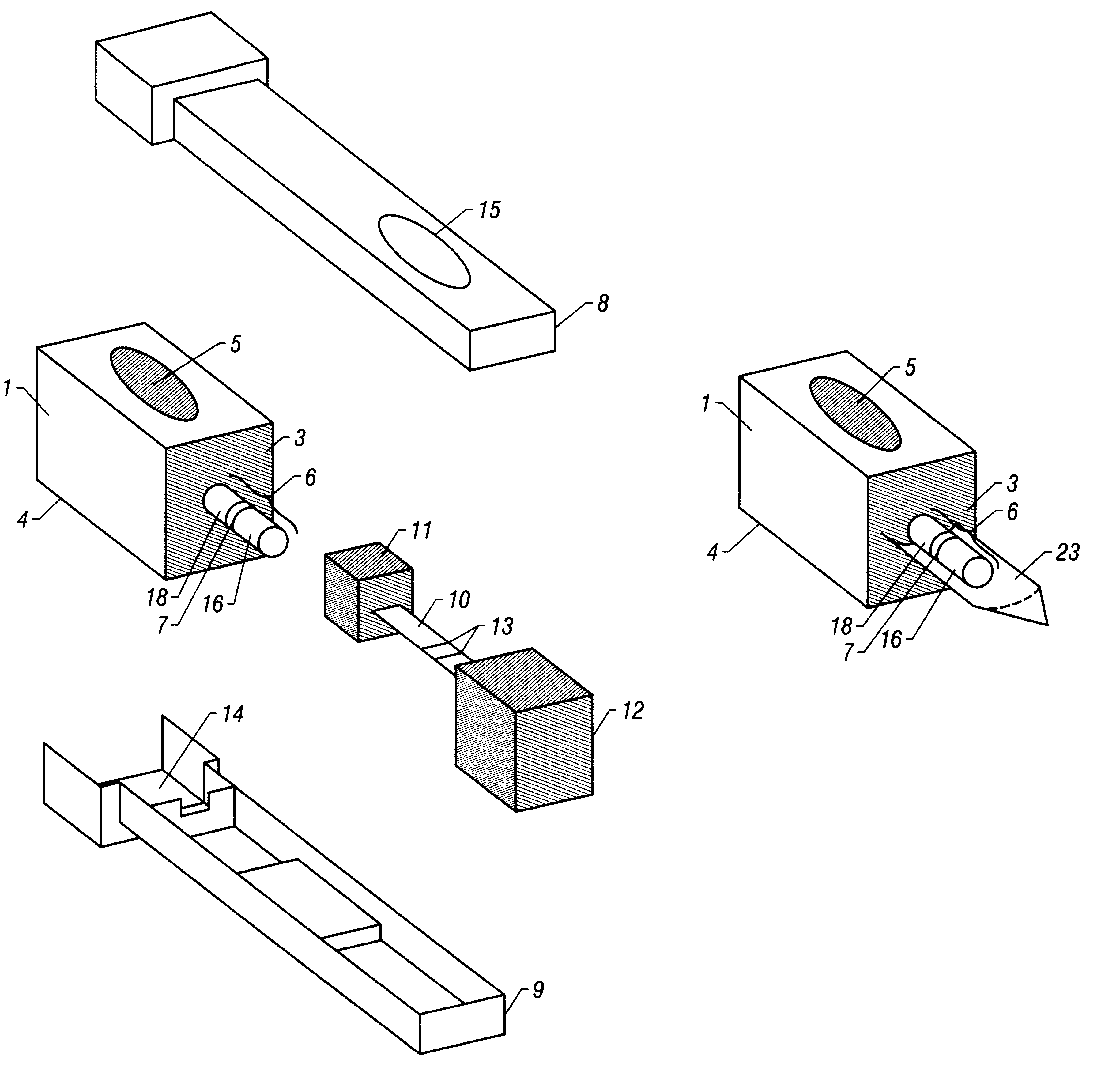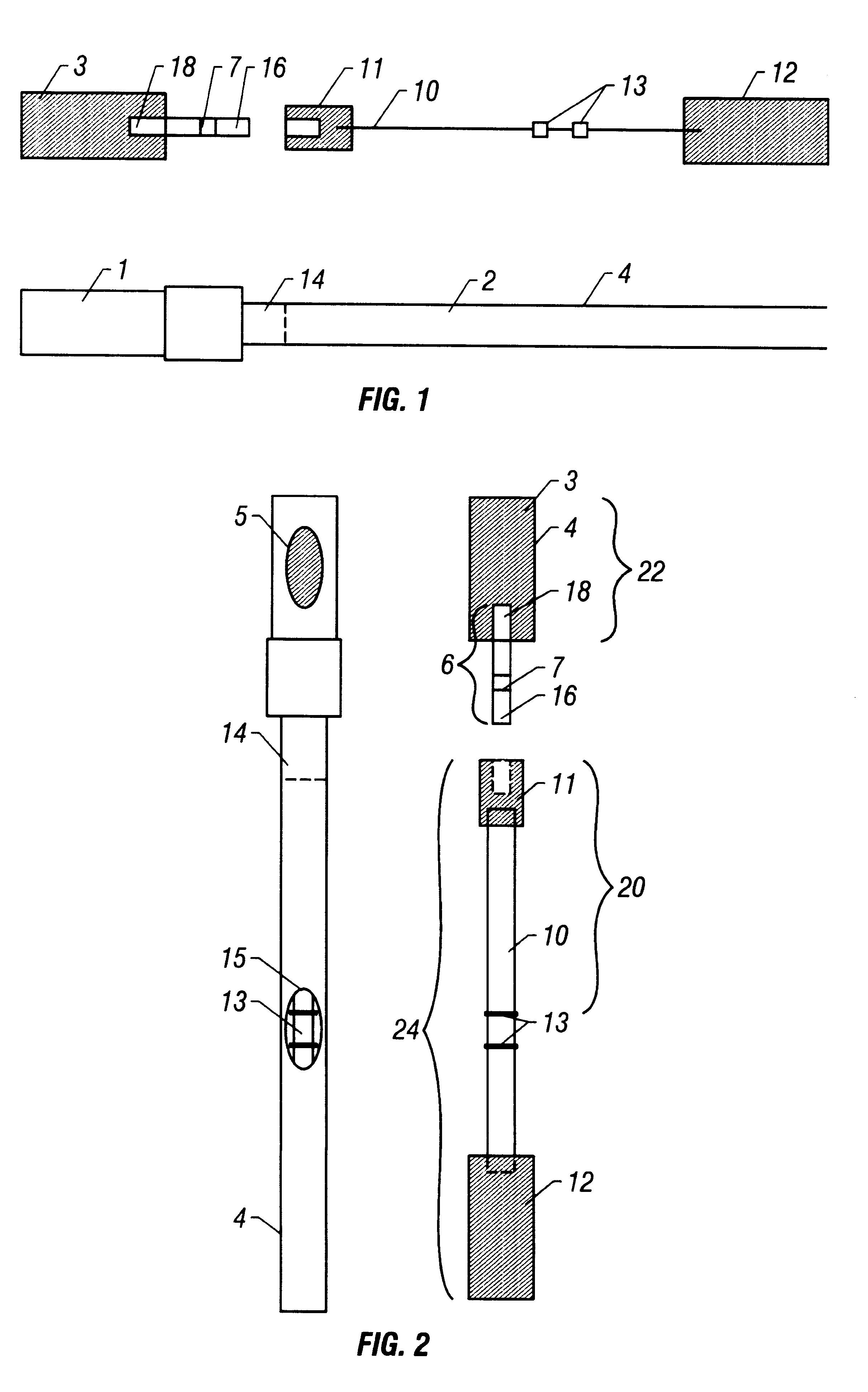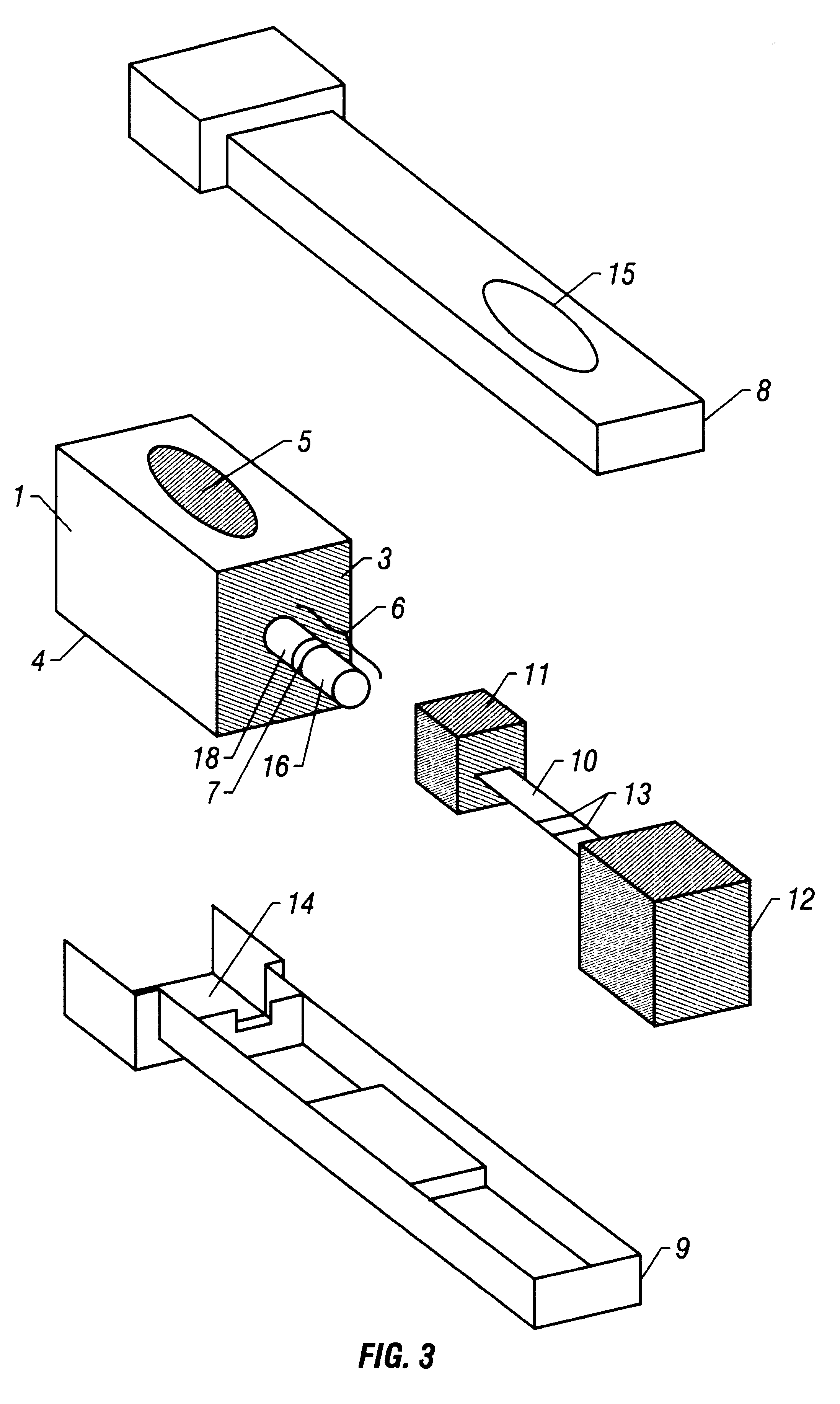Analyte assays and devices
analyte assay and device technology, applied in the field of analyte assay and device, can solve the problems of inability to provide the results of multiple analytes, inefficient delay, and worst potentially life-threatening effects
- Summary
- Abstract
- Description
- Claims
- Application Information
AI Technical Summary
Benefits of technology
Problems solved by technology
Method used
Image
Examples
example 2
With reference to FIGS. 1-3, the device is utilized as in Example 1 with the exception that the labeled antibody has been localized to the distal end-portion (16) of the absorbent wick (6) rather than to the label transfer pad (11). This specific embodiment allows for the pre-incubation of the sample with the labeled antibody prior to both the reassembly of the Sample (1) and Detection (2) components and the subsequent addition of a solution (e.g., buffer) to the reagent application port (5). This specific embodiment ensures that the labeled antibody reaches the test sample, by the process of diffusion, in gradually decreasing concentrations, due to the solubilizing of the labeled antibody following the addition of a solution (e.g., buffer) to the reagent application port (5). The timing between the initial collection of the test sample and the subsequent reassembly / solution addition may be varied to allow for the adjustment of assay sensitivity.
example 3
With reference to FIGS. 1-3, the device is utilized as in Example 1 with the exception that the labeled antibody has been localized to the proximal end-portion (18) of the absorbent wick (6) rather than to the label transfer pad (11). This specific embodiment ensures that the labeled antibody reaches the test sample, by the process of diffusion, in gradually increasing concentrations, as opposed to the previous example (Example 2) where the labeled antibody reaches the test sample in gradually decreasing concentrations, due to the solubilizing of the labeled antibody following the addition of a solution (e.g., buffer) to the reagent application port (5). Requirements for differing reaction kinetics may favor one embodiment over the other.
example 4
With reference to FIGS. 1-3, the device is utilized as in Example 1 with the additional step of localizing a chromogenic compound (e.g., liquid-soluble dye) to the distal end-portion (16) of the absorbent wick (6). This specific embodiment allows for the direct visualization of capillarity-mediated transfer of the test sample through the chromatography medium (10), thus facilitating monitoring of difficult-to-detect samples (e.g., colorless aqueous samples or various physiological fluids).
PUM
 Login to View More
Login to View More Abstract
Description
Claims
Application Information
 Login to View More
Login to View More - R&D
- Intellectual Property
- Life Sciences
- Materials
- Tech Scout
- Unparalleled Data Quality
- Higher Quality Content
- 60% Fewer Hallucinations
Browse by: Latest US Patents, China's latest patents, Technical Efficacy Thesaurus, Application Domain, Technology Topic, Popular Technical Reports.
© 2025 PatSnap. All rights reserved.Legal|Privacy policy|Modern Slavery Act Transparency Statement|Sitemap|About US| Contact US: help@patsnap.com



